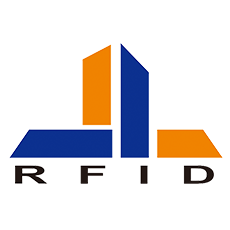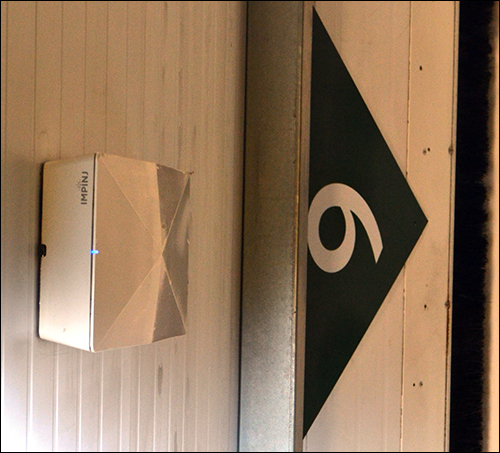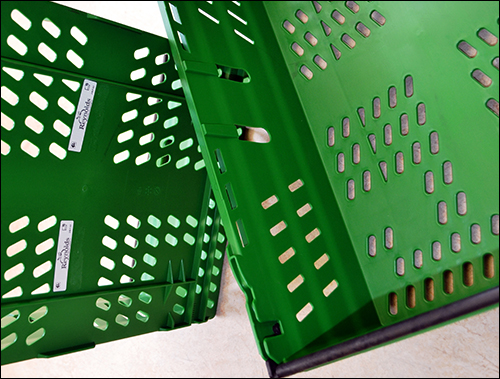Aug 03, 2018—
When fresh food distributor Reynolds Catering Supplies transitioned out of using disposable cardboard boxes for delivery to its restaurants, cafés and hospital customers, it introduced a more durable, reusable and higher-value plastic crate, also known as a tote. But that transition created a new challenge for the company, which delivers nearly 1 million crates of food across the United Kingdom each year: namely, managing those totes and ensuring that they are returned.
The company decided to create a solution employing RFID technology, and used its own IT team to create software that can be integrated with its own enterprise resource planning (ERP) system. It acquired fixed RFID readers from Impinj and worked with Avery Dennisonto identify the most durable and effective tag for that purpose.
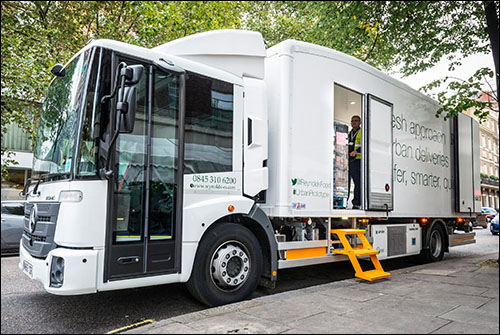
The result is a system that automatically identifies when each crate is packed according to a specific order, as well as when it is shipped and when it returns. Armed with that data, the company can now identify where its totes end up delayed or missing, and thus address the problem. Since the system was taken live with some of its customers one year ago, says Richard Calder, Reynolds' IT director, it has saved the firm approximately £150,000 ($197,000) in the cost of replacement totes. "We are confident when the plastic totes are fully rolled out to [all] clients that the annual savings will be in excess of £350,000," he says. In addition, the technology could be used in the future to track food orders.
Reynolds is one of the United Kingdom's leading suppliers of fresh produce and dairy products for the food-service and catering industries. The company began investigating RFID after its customers requested a non-disposable container for food deliveries. Cardboard boxes required that restaurants or other meal providers dispose of the containers, which was an added expense for them. Reynolds responded to the request with the plastic tote, which costs less than £5 ($6.66) apiece. Reynolds' drivers deliver products loaded in the totes, then pick up the empty totes on subsequent deliveries of food orders.

The totes were launched with some of Reynolds' largest customers—primarily restaurant chains—and were expanded to other customers throughout the following months. A problem soon arose, however, as not all totes found their way back to Reynolds' central DC, located in the city of Waltham Cross.
"Over time," Calder says, "the scale of the loss emerged, and we found there was a black hole where the crates seemed to end up." The problem isn't isolated to Reynolds, he notes, as many other companies in the food-delivery industry have expressed having the same problem managing reusable containers.
An Impinj reader above a loading dock
"That's what set us to thinking [about] what we could do to track and trace them effectively," Calder recalls. "The crucial thing for us was to be able to say to our customers, 'Hang on, you haven't returned your crates,' but we needed a robust system to be able to do that." In fact, the company could not be sure who was failing to return the crates, or where those crates were going.
Reynolds' development consisted of building software to manage collected RFID tag data, and to then share that information with the existing ERP system. It began testing UHF RFID tags and tag placements, as well as how tag reads could be linked to bar-code scans of shipment orders. The firm worked closely with Avery Dennison to identify not only the best tag, but also the best adhesive, in order to ensure that the tag could withstand numerous washing cycles. It determined that the best configuration was two tags with the same EPC UHF RFID number, placed on opposing sides of the bottom of each crate. The crate manufacturer is applying the tags at the source.

Now, as each crate is used, the RFID system tracks the packing, shipping and return processes. First, every crate is linked to a specific customer order that is printed, along with a bar code, on a paper sticker applied to the side of the crate. The crate then travels down a conveyor, where it is loaded with the requested food items. An Impinj reader installed under the conveyor reads the tags on the crate, while a bar-code scanner scans the shipment order's ID on the side of the same crate. In that way, the specific crate can be linked to the particular order and customer.
The loaded crates are moved into a staging area before being loaded onto a truck through one of 19 doors, above each of which another Impinj reader is mounted. As the crates pass through the doors onto the vehicles, their tags are read again, and the data is transmitted to the software, thereby updating the status as shipped. The crates are delivered either directly to a customer within the United Kingdom, or to one of eight regional depots, after which they are reloaded onto a delivery vehicle. The depots do not read the RFID tags.
When a crate is returned empty from a customer, it arrives at the DC and passes once more through one of the 19 dock doors, and the tag is again interrogated. The software can then indicate the crate has been returned so that the customer will no longer be held responsible for that crate. Once the emptied crates have been washed, personnel stack them and use a handheld scanner to ensure that all tags are still operating.
After using the system for a year, Calder says, the company has not had a single tag fail. The most challenging part of the RFID installation, he reports, was linking the bar-code scan of each packing label with the RFID tag on the crate during the packing process.
With the system fully implemented, management can use the collected data to identify which customers are not returning crates on time. It can then contact those customers with specific information about which crates went missing and when this occurred, after which those customers can identify where the crates in question might be, and thus address the problem.
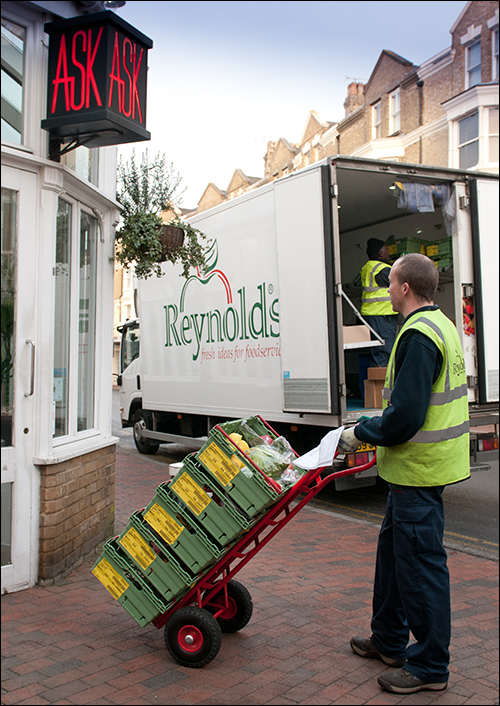
The RFID solution was inexpensive to deploy, Calder indicates, and the company achieved a return on its investment within fewer than three months, based on the prevented loss of crates. The crates themselves cost somewhat less than £5 apiece, while the single-use cardboard boxes are priced at 40 pence (53 cents). With that in mind, the company needs to reuse the crates at least 10 to 12 times in order to pay back the cost of each crate. With the RFID system, he adds, the firm can reuse the crates many more times than that.
In the meantime, customers are saving money by using the reusable crates rather than paying to have cardboard recycled. The system enables them to be sure they are credited for each returned crate. By using the solution, Reynolds can sign agreements with customers enabling them to use the crates at no cost, as long as they return used crates at a near-100 percent rate. Those who cannot meet that demand could be transitioned back to cardboard boxes.
Currently, Calder reports, the company has between 50,000 and 60,000 reusable crates in circulation, with delivery of about 20,000 plastic crates per week. He says the company is now considering other ways in which it can use the system or expand its reach. For instance, Reynolds could install RFID readers in delivery trucks, linking read data with each vehicle's GPS location, so that the system knows when and where the crate was delivered. Since the packing order ID is linked to the crate, the firm could also identify which products were delivered and when this occurred.
The company might also opt to test the technology on forklifts at the DC. In that scenario, each forklift could have an RFID tag attached to it, and readers inside the factory could capture the locations of forklifts moving throughout the facility. Operations managers could then view the forklift's locations and send tasks for the picking of items to the driver within the closest vicinity of the products requested.
News from:http://www.rfidjournal.com/articles/view?17727/3
